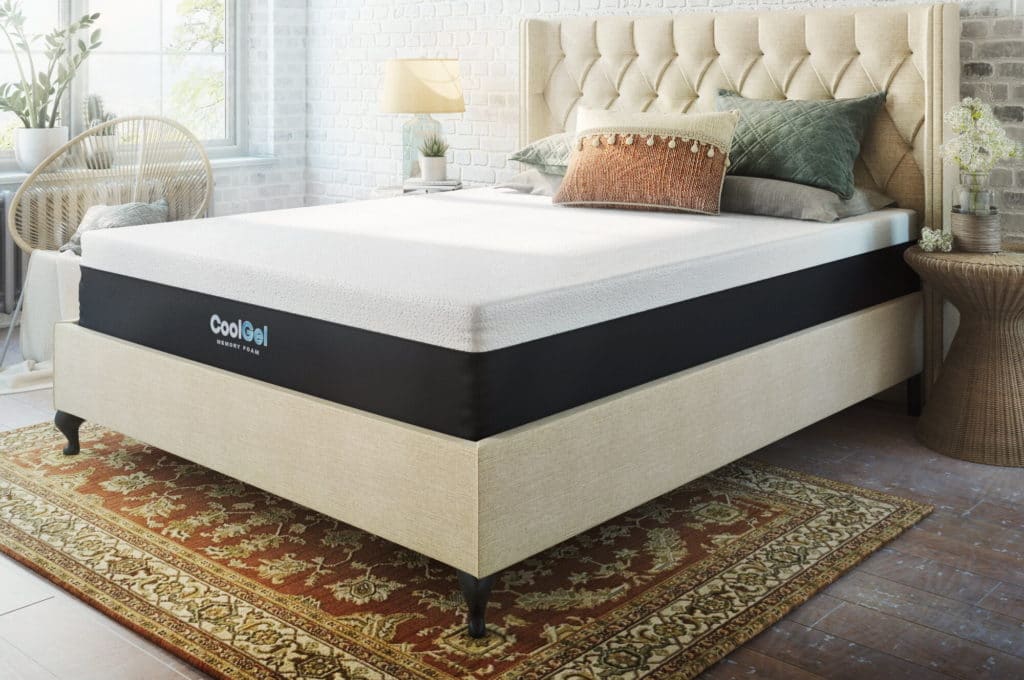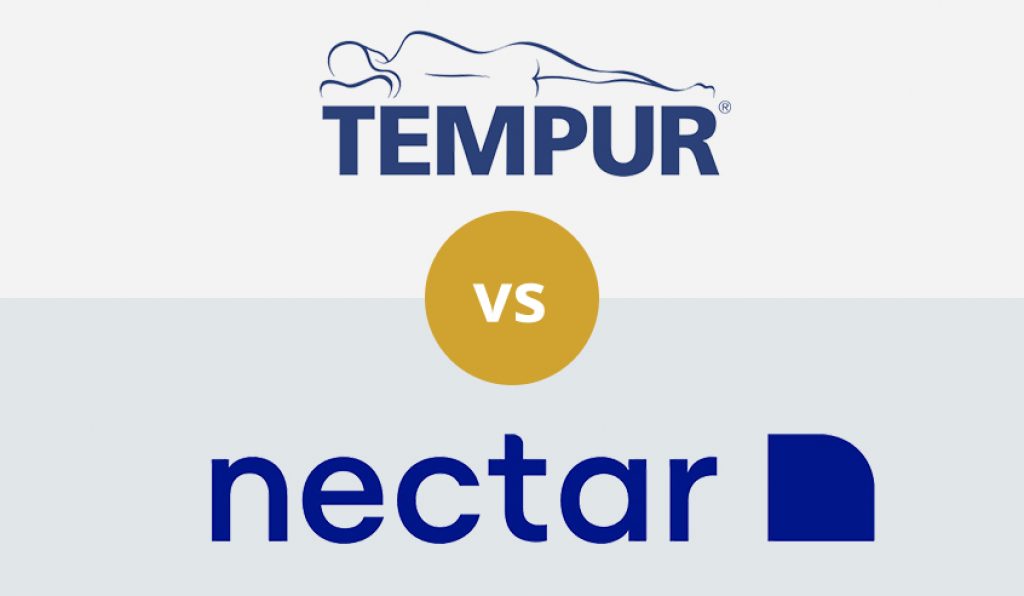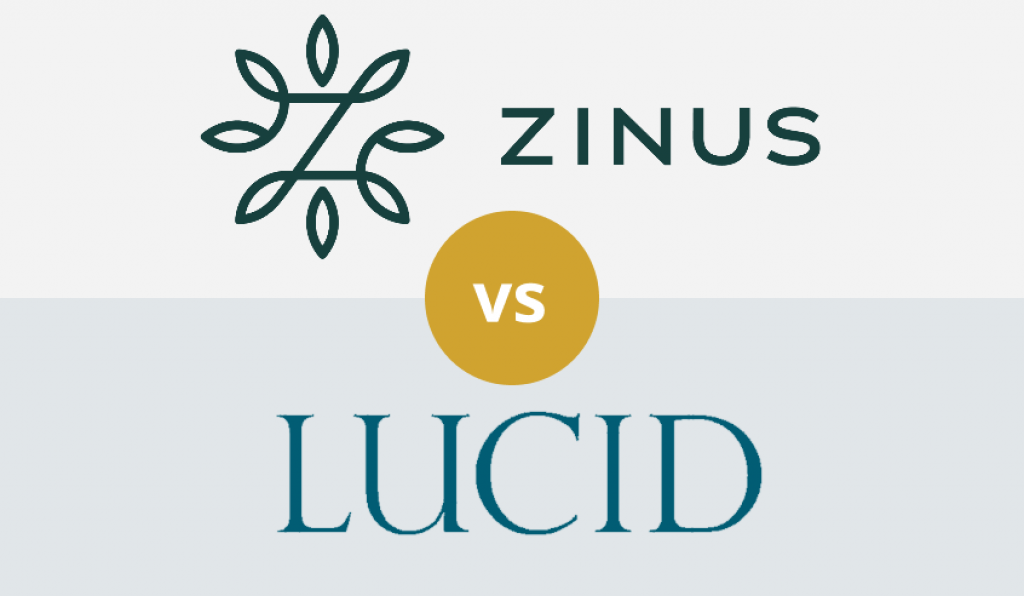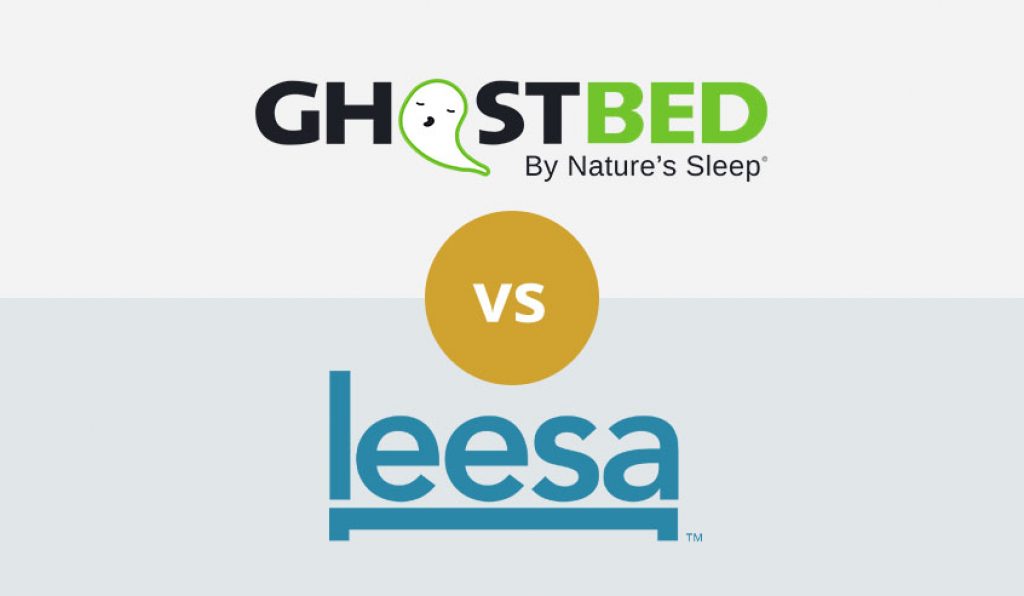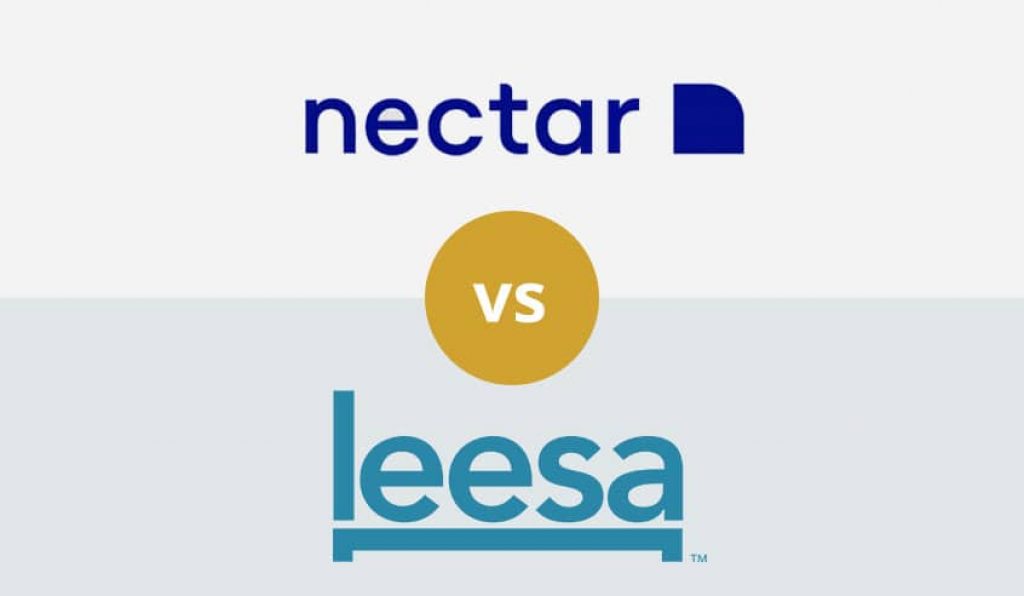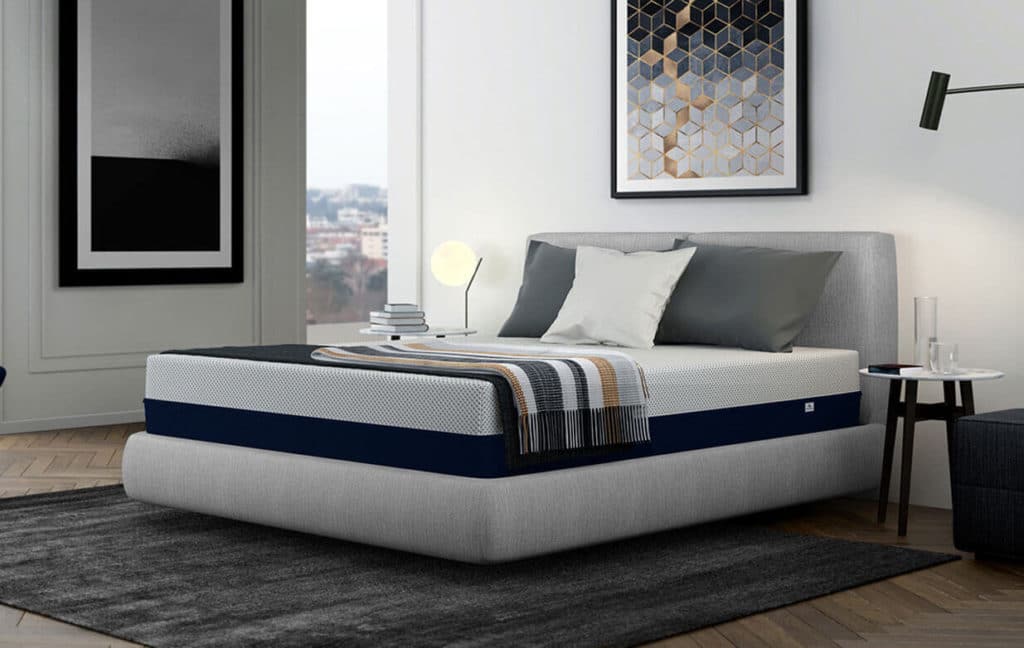

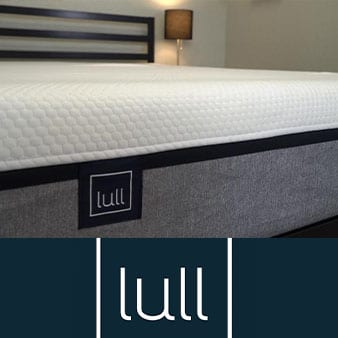

Both Lull and Tuft & Needle produce high-quality foam mattresses that can be shipped directly to your home. On the outside, these mattresses have a lot in common – they are both medium-firm mattresses that are certified by CertiPUR-US. But when it comes to comparing Lull vs Tuft and Needle mattresses, there are a number of important differences on the inside. The Lull mattress has a layer of gel foam to keep you cool, while the polyfoam comfort layer in the Tuft & Needle mattress offers the best vibration isolation.
To help you decide between the Lull and Tuft & Needle mattresses, we’ll take a closer look at how they stack up.
Both Lull and Tuft & Needle are three-layer foam mattresses that total 10 inches in thickness. They both come with 100-night sleep trials, 10-year warranties, and CertiPUR-US certification. But the two mattresses differ significantly in price and in their interior construction.
The Lull mattress is significantly more expensive than the Tuft & Needle mattress, but that price comes with a few important advantages. Most notable is the 1.5-inch gel-infused memory foam layer in the Lull mattress, which plays an important role in keeping you cool throughout the night and conforms to your body. The Tuft & Needle mattress, on the other hand, uses an adaptive foam layer that offers cooling and conforming to a much lesser degree.
Keep in mind that the difference in construction in these layers also plays a role in firmness. While both mattresses are described as medium firm, the memory foam in the Lull mattress may make it feel softer than the Tuft & Needle mattress. Alternatively, for heavier sleepers, it may be easier to come into contact with the support foam layer on the Lull mattress, which can push side sleepers in particular towards the Tuft & Needle mattress.
| Lull | Tuft & Needle |
|
|
| VIEW ON AMAZON | VIEW ON AMAZON |
| Lull | Tuft & Needle | |
| Type | Foam | Foam |
| Firmness | Medium firm (6.5) | Medium firm (6.5) |
| Thickness | 10″ | 10″ |
| Weight | 71 lbs | 71 lbs |
| Sleep trial | 100 nights | 100 nights |
| Warranty | 10 years | 10 years |
| Price | $800 (Queen) | $595 (Queen) |
| Certification | CertiPUR-USSustainable Furnishing Council® Member Mattress Recycling Council® Member |
Greenguard GoldStandard 100 by OEKO-TEX Certi-PUR-US |
| Lull | Tuft & Needle | |
| Support core | 7″ PU foam | 7″ 1.8 PCF HD polyfoam |
| Comfort layers | 1.5″ foam blend
1.5″ gel-infused memory foam |
3″ 2.8 PCF polyfoam |
| Cover | Polyester and rayon | Micro polyamide and polyester |
The Lull and Tuft & Needle mattresses are relatively similar in construction. They are both made completely of foam and use three layers totaling 10 inches thick. Plus, the composition of the support core is nearly the same, with only minor differences between the polyurethane foam used in the Lull mattress and the PCF HD polyfoam used in the Tuft & Needle mattress. Similarly, both covers are constructed primarily from polyester to provide a soft, neutral feel.
Where the two mattresses differ most is in the construction of the comfort layers. The Lull mattress uses two 1.5-inch layers: one of a soft foam blend and one of gel-infused memory foam. The soft foam blend reduces the firmness of the mattress somewhat, while the gel-infused memory foam provides cooling throughout the night and allows the foam to conform to your body.
The Tuft & Needle mattress, on the other hand, uses a single layer of PCF polyfoam. This polyfoam material is somewhat stiffer than the combination of foams used in the Lull mattress, although users find that it is still soft enough to work for side and stomach sleepers. Importantly, the lack of any memory foam means that the Tuft & Needle mattress will not conform to your body, but rather retains a neutral foam feel.
Ultimately, choosing the right mattress comes down to which is most comfortable for your body. If you’re comfortable on your mattress, you’ll sleep better and wake up without aches and pains. A mattress’s comfort depends on a number of factors as well as your own sleeping style and preferences. Here, we’ll highlight some of the most important comfort features of the Lull and Tuft & Needle mattresses.

The Tuft & Needle mattress has a more neutral foam feel, since it lacks conforming memory foam. That’s not to say it’s not firm – it is – but the neutral feel allows a wider range of sleepers to feel comfortable on the mattress.
When it comes to temperature control, the Lull mattress has a definitive edge over the Tuft & Needle mattress. The gel-infused memory foam in the Lull mattress is specifically designed to transfer heat away from your body, keeping the mattress cool throughout the night. While the adaptive foam used in the Tuft & Needle mattress does incorporate graphite and gel to provide a similar degree of heat transfer, the more diffuse use of these materials throughout the mattress diminishes the cooling effect relative to the Lull mattress.
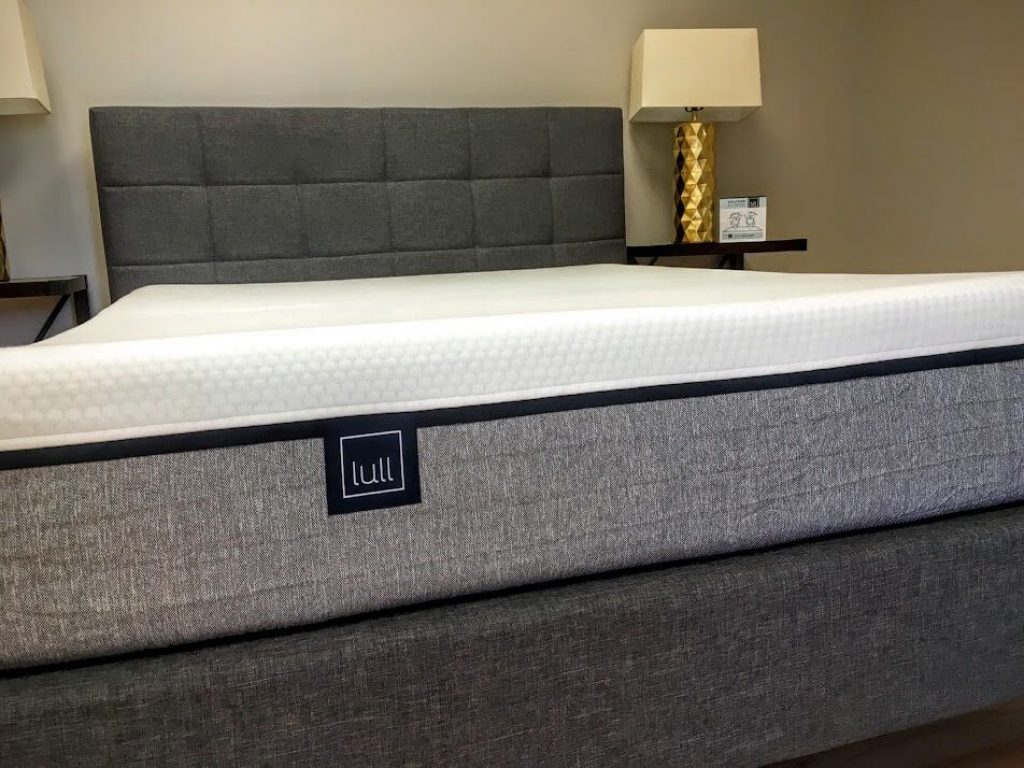
The Tuft & Needle mattress is significantly more responsive than the Lull mattress – after you get up from the Tuft & Needle mattress, the foam snaps back to a neutral position relatively quickly. That’s a major advantage for active sleepers who roll around in the night, since you won’t find yourself rolling in between cavities in the foam.
The difference in responsiveness between the two mattresses is in large part due to the differences in the foam used in the comfort layers. The memory foam in the Lull mattress is slower to respond than the adaptive foam used in the Tuft & Needle mattress.

The memory foam in the Lull mattress conforms to your body, so there’s really very little bounce – instead, you’ll feel as if you are slightly sinking into the surface of the mattress when you land on it. In contrast, the adaptive foam in the Tuft & Needle mattress is more neutral and will allow you to bounce off the surface of the mattress to a small degree.
Over the long term, the adaptive foam in the Tuft & Needle mattress is more resilient as well. The memory foam in the Lull mattress will eventually fail to fully return to a neutral position after you leave the bed, whereas the adaptive foam layer doesn’t have this problem, since it doesn’t conform to your body.
The Lull mattress wins out when it comes to edge support, in large part because the mattress as a whole is slightly firmer than the Tuft & Needle mattress. Although you may feel like you’re sinking into the memory foam layer in the Lull mattress, this layer is thin enough that the foam blend and support foam catches you and holds you firmly on the edge of the mattress.
The Tuft & Needle mattress will hold you on the edge of the bed, but you’ll definitely notice that the mattress feels like it wants to compress into itself as you sit on the edge.
Foam mattresses are infamous for their odors upon arrival, but both the Lull and Tuft & Needle mattresses aren’t particularly problematic in this regard. Users noted that the mattresses do have a slight to moderate chemical odor when they first arrive – as both manufacturers warn may be the case – but that the odor goes away within about one to two days at most.
In addition, both the Lull and Tuft & Needle mattresses inflate relatively quickly – within a matter of hours. Both mattresses can be used the night they arrive as long as you take them out of the box a few hours before bed.
| SLEEP POSITION | Light sleepers
(less than 130 lbs) |
Average sleepers
(130 lbs to 230 lbs) |
Heavy sleepers
(greater than 230 lbs) |
| Lull | |||
| Side | 8 | 10 | 8 |
| Back | 9 | 10 | 9 |
| Stomach | 7 | 8 | 8 |
| Tuft & Needle | |||
| Side | 6 | 8 | 7 |
| Back | 9 | 7 | 9 |
| Stomach | 6 | 7 | 7* |
*Out of 10
The Lull mattress is generally favored by back sleepers, while the Tuft & Needle mattress is generally favored by side and stomach sleepers.
The reason for this is that the Lull mattress is somewhat more firm and the conforming feeling of the memory foam layer typically appeals more to back sleepers than to other types of sleepers. That said, heavy sleepers may have more trouble with the Lull mattress because of the memory foam layer – it compresses more easily under weight, allowing heavy sleepers to come into contact with the uncomfortable support foam layer.
The Tuft & Needle mattress, on the other hand, has a softer feeling that prevents side sleepers in particular from waking up with aches and pains. While heavy sleepers do not overall prefer one mattress over the other, the single layer of adaptive foam in the Tuft & Needle mattress can also help to keep heavier sleepers off of the firm support foam layer.
| SIZE | Lull | Tuft & Needle |
| Twin | $500 | $350 |
| Twin XL | $550 | $395 |
| Full | $700 | $495 |
| Queen | $800 | $595 |
| King | $900 | $750 |
| California King | $900 | $750 |
The Lull mattress is significantly more expensive than the Tuft & Needle mattress, making Tuft & Needle the preferred choice for budget shoppers who feel comfortable on either mattress. However, don’t let the price make your decision for you – it’s well worth spending a little bit of extra money in order to get a mattress that is comfortable for you.
| Sleep trial | Warranty | Refund | Delivery | |
| Lull | 100 days | 10-year warranty | Full | Within the U.S. |
| Tuft & Needle | 100 days | 10-year warranty | Full | Within the U.S. |
Lull and Tuft & Needle both make customer service and satisfaction a priority. Both mattresses come with 100-day sleep trials, so that you can return the mattresses with no questions asked within the first 100 days if you do not find the mattress comfortable. Since foam mattresses are notoriously difficult to return – they cannot be recompressed to put in a box – Lull and Tuft & Needle will either send a company to pick up unwanted mattresses or have you take it to a local retail store.
Lull and Tuft & Needle are also very competitive when it comes to their warranty policies. Both companies offer 10-year warranties with full refunds rather than prorated refunds based on how long you’ve owned the mattress. In addition, both companies cover indentations forming within 10 years under the warranty – all you have to do to claim the warranty is to get in contact with the customer service teams and to send a picture. The warranties for both mattresses are written in plain English, with no legalese, so there’s no nonsense when you go to make a warranty claim.
VIEW ON AMAZON [wpsm_pros]
[/wpsm_pros][wpsm_cons]
[/wpsm_cons]
VIEW ON AMAZON [wpsm_pros]
[/wpsm_pros][wpsm_cons]
[/wpsm_cons]
The Lull and Tuft & Needle mattresses are highly similar foam mattresses, but they have a few key differences that set them apart. The Lull mattress is slightly firmer and has a layer of gel-infused memory foam that allows the mattress to conform to your body while keeping you cool. The Tuft & Needle mattress is softer and doesn’t have the same memory foam feeling. Overall, many back sleepers preferred the Lull mattress, while many side and stomach sleepers preferred the Tuft & Needle mattress. The price difference between the Lull vs. Tuft & Needle mattresses is also noteworthy, since the Tuft & Needle mattress is much more friendly to sleepers on a budget.
